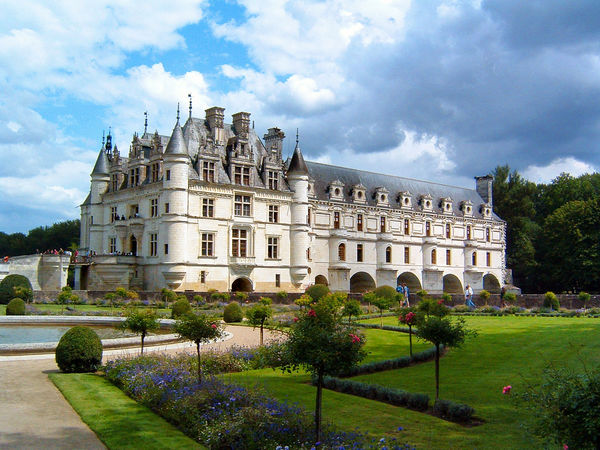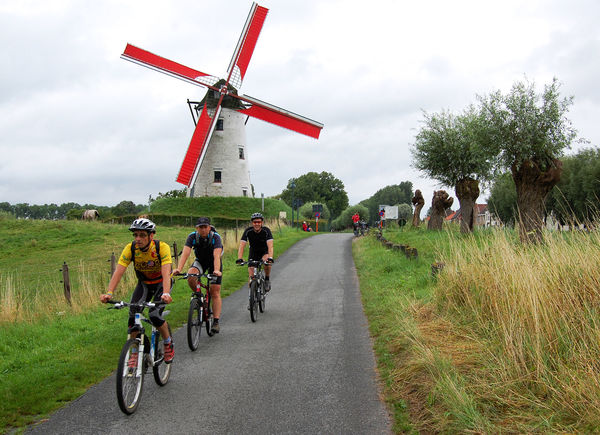Biking in Europe’s Boonies
By Rick Steves

Europe is a treasure chest of great cultural monuments. But it's also a continent filled with natural beauty — often overlooked by tourists sprinting from sight to sight, or searching for the perfect souvenir. I've found that a day biking in the great outdoors can be just as culturally fulfilling as time spent in a great church or art gallery.
Biking through the countryside (using a town as a springboard) is extremely popular in Europe. Thanks to the laws of supply and demand, you can generally count on finding bike-rental shops wherever there are good bike-tripping options. Here are five top bike rides that can take you out of the tourist rat race and into the heart of Europe.
Belgium: For the best short bike trip out of the well-preserved Gothic city of Bruges, pedal four miles each way to the nearby town of Damme. You'll enjoy a whiff of the countryside and see a working windmill while riding along a canal to a charming (if well-discovered) small market town. The route is a straight and level ride through Belgium's polder — a salt marsh that would flood each spring until it was reclaimed by industrious local farmers. Your destination is Damme — once a thriving medieval port, and then a moated garrison town, and now a tourist center. Allow about two hours for a leisurely round-trip ride and a brief stop in Damme.
Italy: Lucca, Tuscany's most impressive fortress city, is encircled by a perfectly intact wall. This Renaissance wall is also its most enjoyable attraction — especially when you're biking around on top of it. Stretching for 2.5 miles, this is an ideal place to come for an overview of the city. The wide ramparts are made-to-order for a leisurely ride — it's a wonderfully smooth 20–30-minute pedal, depending on how fast you go and how crowded the wall-top park is. The best people-watching — and slowest pedaling — is during passeggiata time, just before dinner, when it seems that all of Lucca is doing slow laps around the wall.
France: While known for its many châteaux, the Loire River valley offers much more, including wine-tastings, balloon rides, graceful gardens — and towpath bike rides. Cycling options are nearly endless since the elevation gain is generally manageable. Amboise, Chenonceaux, Azay-le-Rideau, and Chinon all make good biking bases and have places to rent cycles. For a convenient home base, try the city of Blois. It's well-positioned as a starting point for biking forays into the countryside. You can cycle from Blois to Chambord — the monumental chateau of François I — in a level, one-hour, one-way ride along a well-marked, 10-mile route, much of it a bike-only lane that follows the river.
Austria: Biking is one of the most enjoyable ways to experience the famous "Blue Danube." Bicyclists rule here, and you'll find all the amenities that make this river valley so popular with Austrians on two wheels. The best route starts west of Vienna in the village of Melk. From here, it's a three- to four-hour, gently downhill pedal to the riverside village of Krems. The best biking is on the south side of the river, which has a dedicated, paved bike path the whole way; at worst you ride next to — but never on — the road. The south side is also much quieter and more rural than the traffic-ridden north side, with plenty of vineyards and small inns (Gasthöfe) in the villages along the way. If you want to see attractions on the north side, inexpensive ferries carry people, bikes, and cars regularly across the river at three points (Spitz, Weissenkirchen, and Dürnstein).
Ireland: The Dingle Peninsula has a fabulous 30-mile loop that starts in the town of Dingle and mostly follows the Atlantic coastline. Cycling around the peninsula feels like a trip through an open-air museum; you'll see stone cottages, ancient churches, burial mounds, and standing stones — some older than the pyramids. Stop by the Gallarus Oratory, built about 1,300 years ago; it's one of Ireland's best-preserved early Christian churches. Count your blessings if you see sunshine; more than 100 inches of rain a year gives this area its "40 shades of green." This is the toughest ride I've listed: It's a demanding four hours by bike — if you don't stop to catch your breath — and roads can be congested in summer.
When I'm traveling, I find having a bike parked in the courtyard of my hotel is a great way to fit in and literally "go local." By biking in the boonies, you can slip your fingers under the staged culture of any destination and actually find a pulse. It's clear to me that the more you delve into a region, the more you appreciate and enjoy it.

